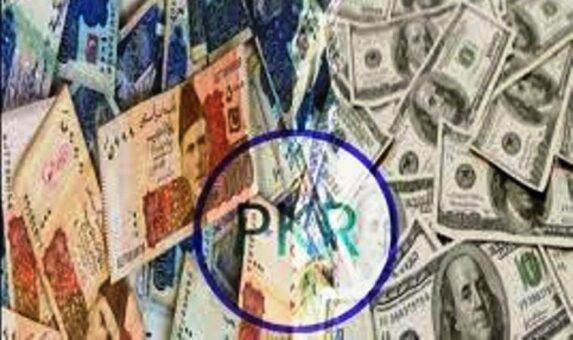KARACHI: State Bank of Pakistan (SBP) has said that the rupee value to stabilize as large payment was made last week.
Talking to representatives of Forex Association of Pakistan (FAP) on Thursday, Executive Director of SBP Syed Irfan Ali Shah said that last week large payments made last week and now the local currency would not devalue further, said a FAP press release.
He further said that the government had no intention to devalue the local currency.
He said that the local currency would depreciate with rising demand in interbank foreign exchange market but it would stabilize on easing demand.
“It has been seen today the rupee value strengthen in the interbank bank,” he said and added that the rupee value would further strengthen in coming days.
He said that the trade deficit would reduce to $12 billion from previous year’s $18 billion. He also hoped that the exports would grow to $28 billion from $23 billion.
The SBP executive director said that friendly countries including Saudi Arabia, Dubai, Malaysia, Singapore, Australia and China would make investment of around $20 – 30 billion next year. This will increase foreign direct investment, he added.
The government is also making all efforts to send skilled laborers abroad to increase workers remittances. These efforts will help increasing workers remittances from $18 billion to $25 billion, he added.
Earlier, FAP President Malik Bostan expressed reservations on the shortage of dollar in free market.
Bostan attributed the rising dollar rate to interbank because before the visit of IMF delegation on March 05 the interbank rate was Rs138.50 to the dollar and since than the dollar value increased by Rs3 to Rs141.50. This trend also prevailed in free market, he added.
He said that the government had admitted the IMF conditionalities on exchange rate policy that should be based on market forces.
Due to these conditions there are 80 percent buyers and 20 percent sellers in the cash free market, he added.
Malik Bostan said that the dollar demand was also higher due to Hajj season.
He also pointed out to a comment by Dr. Ashfaque Hassan, Member Advisor Council, who said that the dollar would reach Rs150. Such statements send negative message to the public, he added.
Malik Bostan said that the dollar demand was also rising due to conditions imposed on non-filer of income tax returns by the government as people had investment option in dollar, gold and prize bonds.


